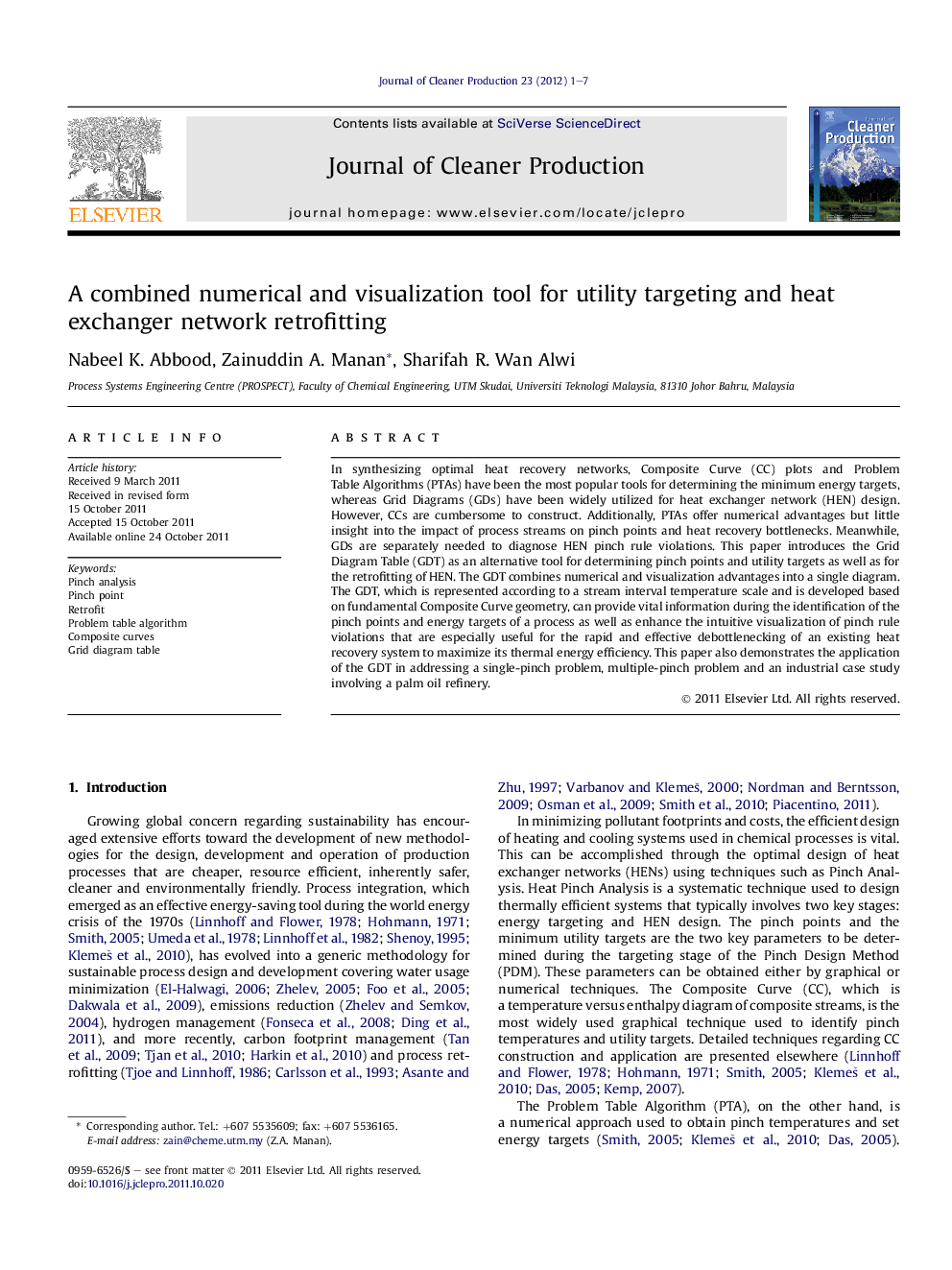| Article ID | Journal | Published Year | Pages | File Type |
|---|---|---|---|---|
| 1745797 | Journal of Cleaner Production | 2012 | 7 Pages |
In synthesizing optimal heat recovery networks, Composite Curve (CC) plots and Problem Table Algorithms (PTAs) have been the most popular tools for determining the minimum energy targets, whereas Grid Diagrams (GDs) have been widely utilized for heat exchanger network (HEN) design. However, CCs are cumbersome to construct. Additionally, PTAs offer numerical advantages but little insight into the impact of process streams on pinch points and heat recovery bottlenecks. Meanwhile, GDs are separately needed to diagnose HEN pinch rule violations. This paper introduces the Grid Diagram Table (GDT) as an alternative tool for determining pinch points and utility targets as well as for the retrofitting of HEN. The GDT combines numerical and visualization advantages into a single diagram. The GDT, which is represented according to a stream interval temperature scale and is developed based on fundamental Composite Curve geometry, can provide vital information during the identification of the pinch points and energy targets of a process as well as enhance the intuitive visualization of pinch rule violations that are especially useful for the rapid and effective debottlenecking of an existing heat recovery system to maximize its thermal energy efficiency. This paper also demonstrates the application of the GDT in addressing a single-pinch problem, multiple-pinch problem and an industrial case study involving a palm oil refinery.
